
Fig. 1. Planned flight track for NOAA 43, Flight ID: 100913I1, Mission ID: WXWXA 92L5
| Aircraft Commander | Al Girimonte |
| Co-pilot | Kathy Martin |
| Co-pilot | Mark Sweeny |
| Flight Engineer | Dewie Floyd |
| Flight Engineer | Ken Heystek |
| Navigator | Joe Bishop |
| Flight Director | Barry Damiano |
| System Engineer | Dana Naeher |
| Data Technician | Bobby Peak |
| Dropsonde Operator | Charles Lynch |
| Lead Scientist/Cloud Physics | Shirley Murillo |
| Radar Scientist | Brad Klotz |
| Dropsonde Scientist | Eric Uhlhorn |
| Ocean Winds Scientist | Paul S. Chang |
| Ocean Winds Scientist | Zorana Jelenak |
| Ocean Winds Scientist | Jason Davorsky |
|
|
Mission Plan :
The original plan was for butterfly pattern with a flight time of ~9 hrs. Because of several problems (electrical fire at the AVAPS station, obtaining flight clearance, being "blocked-in" by a Cessna) we shorten the mission to a single figure 4 pattern into AL92/PGI 44L (Pre-Karl) to capture genesis. We started the mission at 12,000 ft (radar) and then descend to 7,000 ft (radar) for the second half of the flight pattern for the Ocean Winds experiment. We took off and landed in St. Criox (Fig. 1). Our first pass into the "center" was from the north and then we turned and descended to the NW for our second pass coming from the west. The NASA DC-8 was also flying the system at the same time were out there.

Mission Summary :
| Take off | Landing
| St. Croix, USVI
| 13/: 20:00UTC
|
| 14/04:00 UTC
| | ||
AL92/PGI44L has had a development and regeneration of convection each morning for the last few days followed by a collapse of the convection in the evenings and no definitive evidence of a lasting circulation. It remains to be seen if the system will finally begin to organize or undergo true genesis as many of the models have been suggesting. Trying to determine a circulation center has been difficult since there seems to be multiple centers, mostly at mid-levels. Water vapor imagery shows a disorganized area with not sign of formation. In the mid-Atlantic you can see Hurricane Igor and Julia at the edge of the image.
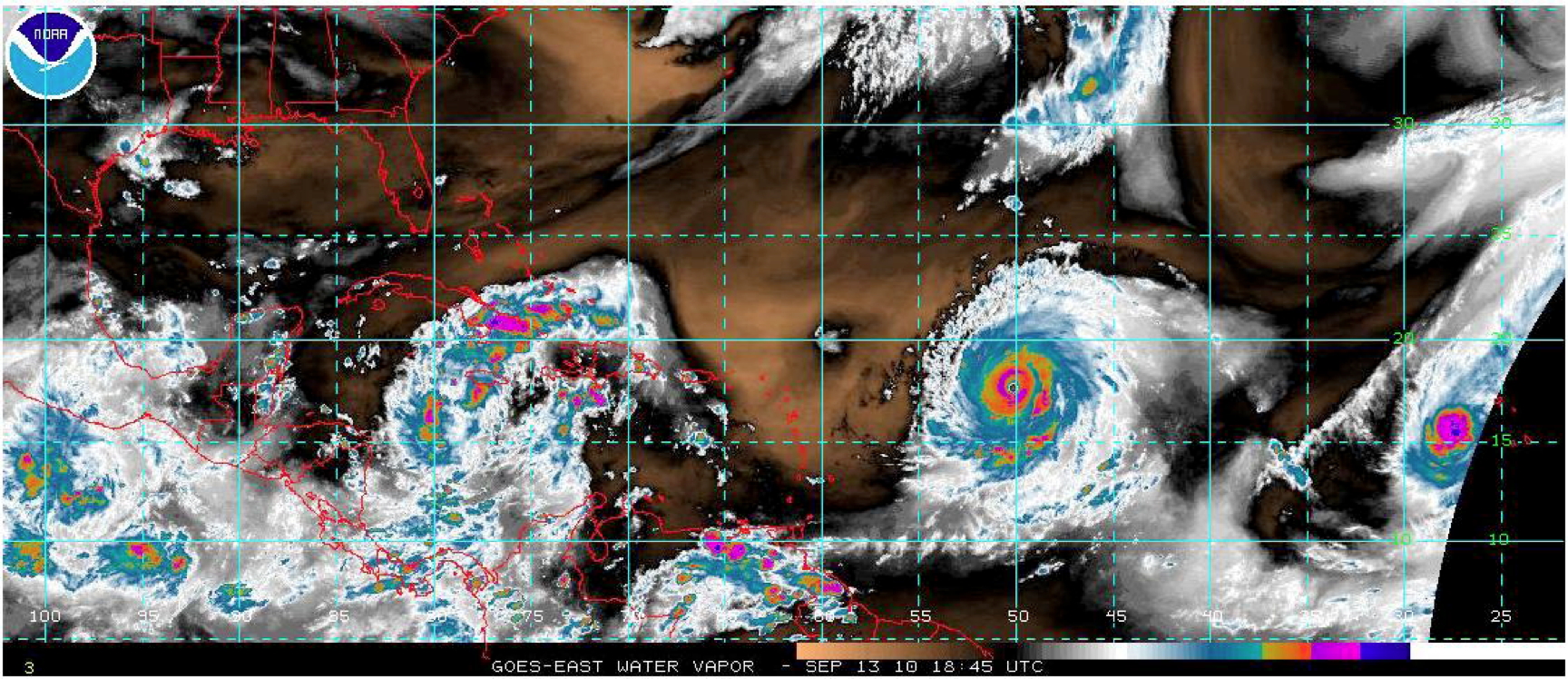
The CIMSS upper level winds show a large anti-cyclone over the Gulf of Mexico bordered to the north by the jet and extending along the frontal boundary out into the Atlantic. AL92 and the Caribbean the dominant flow is zonal (Fig. 3).

The CIMSS low-level vorticity analysis shows a well-defined area but during our flight with did not see anything that would hint at a developing system (Fig 4.). The model consensus track is also drawn.
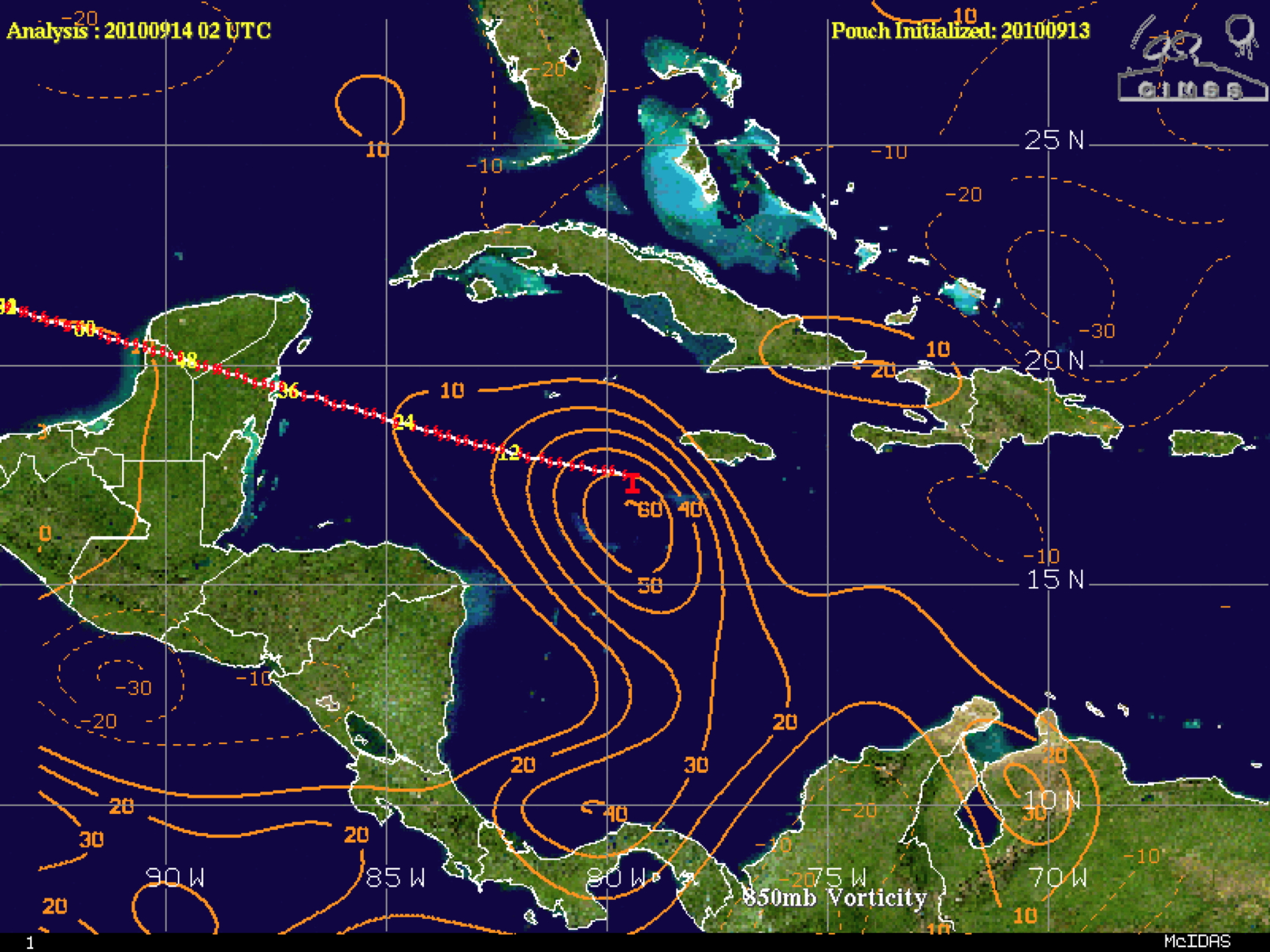
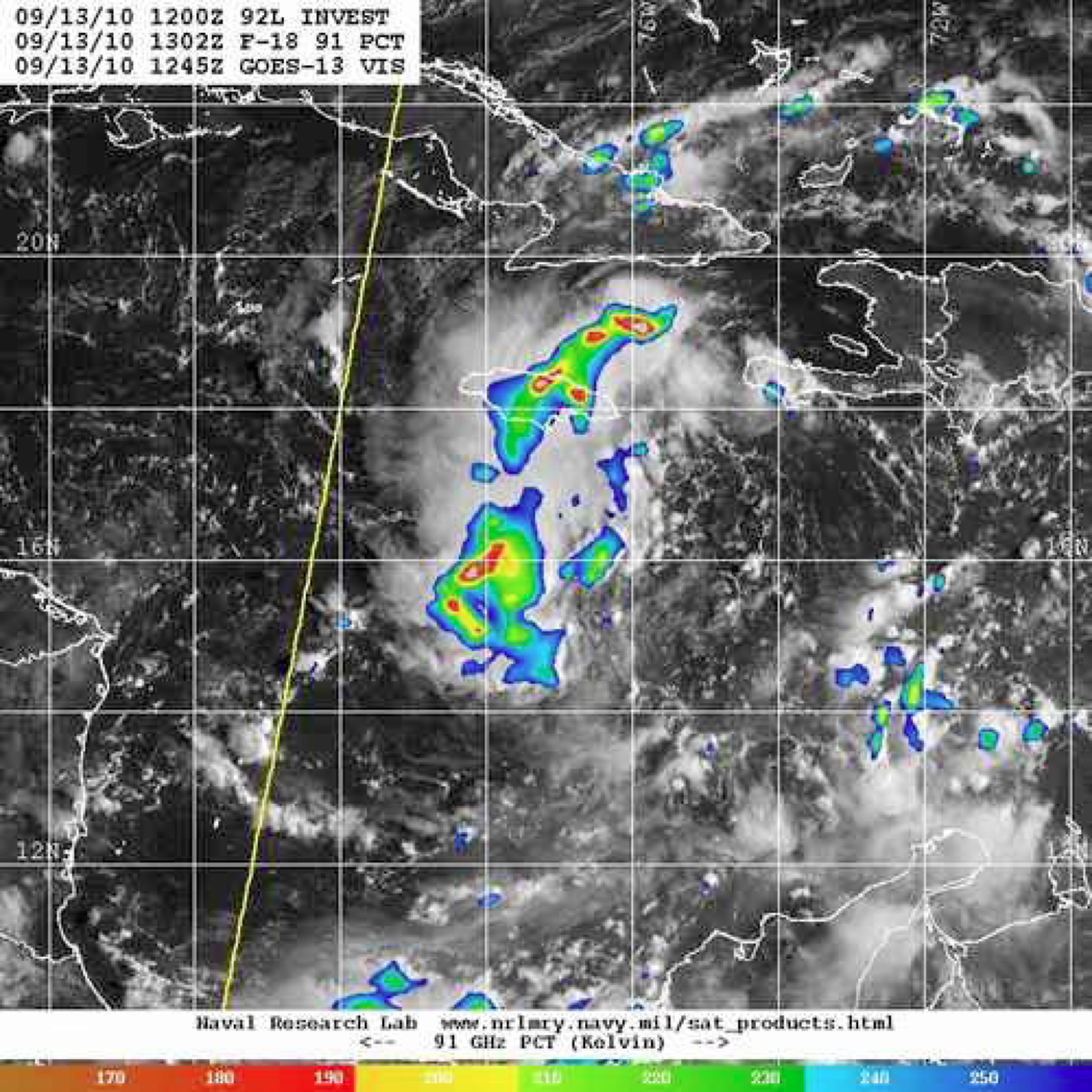
Microwave imagery from SSMIS-85Ghz PCT at 1302 UTC showed two areas of convection (Fig. 5). During our flight the southern most convective area was not present. Our drop pattern was to drop sondes at the turn points, midpoint, and a "center" drop at 1st and last pass. In the middle our flight pattern, after our first pass we descended to 7,000 ft (radar) for the Ocean Winds part of the experiment. Eight sondes were dropped with the highest wind being 5 kt at the surface. The SFMR values were also around 5 kt. The pressure remind constant at 1007 mb. All the convection that was present in the daytime was complete gone during our flight. A center was difficult to determine based on data so we flowed the prescribed flight pattern center. In order to minimize interference between the TDR and Ocean Winds hardware, the LF radar was run in "sector scan mode" when the aircraft was at lower altitude during the last pass through the "center".
Below are two radar "quick looks" at 1 and 3 km.

|
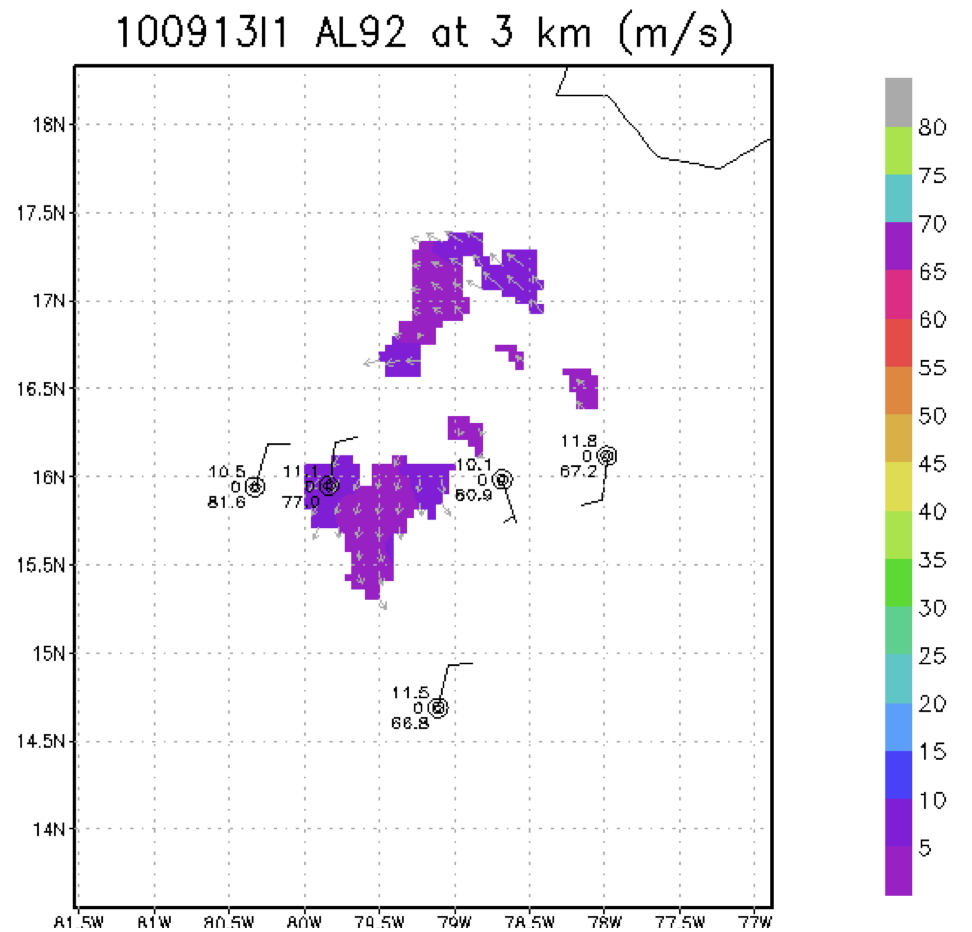
|
| Fig. 6. Quick-look (a) 1 and (b) 3 km altitude. Doppler wind analyses composites from NOAA 43 during flight 100913I1. | |
Figure 6 shows the Doppler wind analyses quick look for two altitudes 1 and 3 km. The sondes are also plotted. As you can see there weren't much scatters at these levels. The sondes are hinting at a weak circulation. Is there is genesis occurring it is happening very slowly. Figure 7 shows the actual flight track we flew.
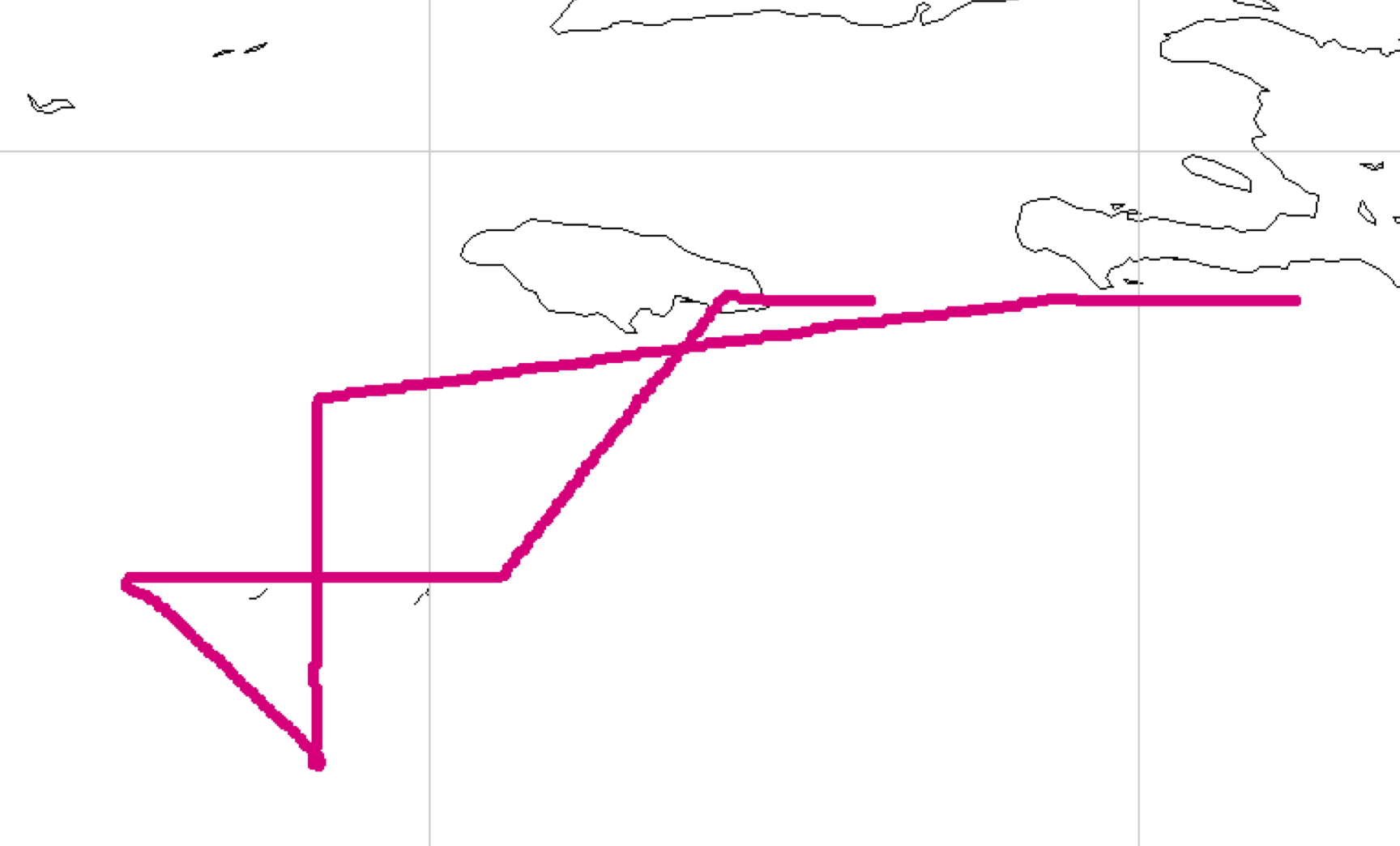
Problems :
There were several problems that were encountered before take-off. There was an electrical fire at the AVAPS station that delayed take-off. The pilots had difficulty getting flight clearance and then a private aircraft (a Cessna) parked near us, blocking us from leaving. Our take-off was late by almost 2 hours.
The radar, flight-level, SFMR, and dropsonde systems worked well on this flight. Doppler analyses were conducted and successfully sent off the plane in real-time. There were times that the TDR froze and that is noted in the radar logs. The CCN counter had problems. From the beginning of the flight it complained about a sensor being fogged. After x-chatting with Terry Lathem he suggested to shut off the instrument.
Shirley Murillo
10/14/10
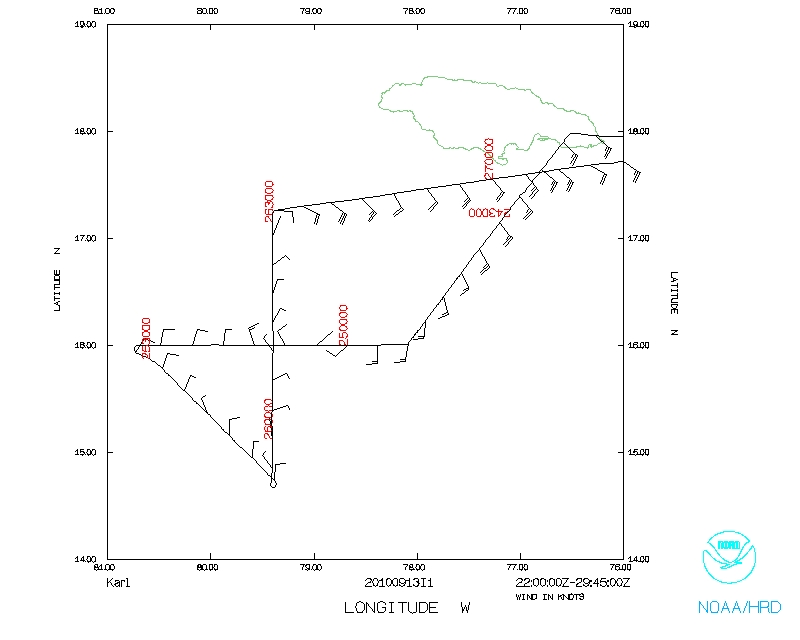 Flight track |
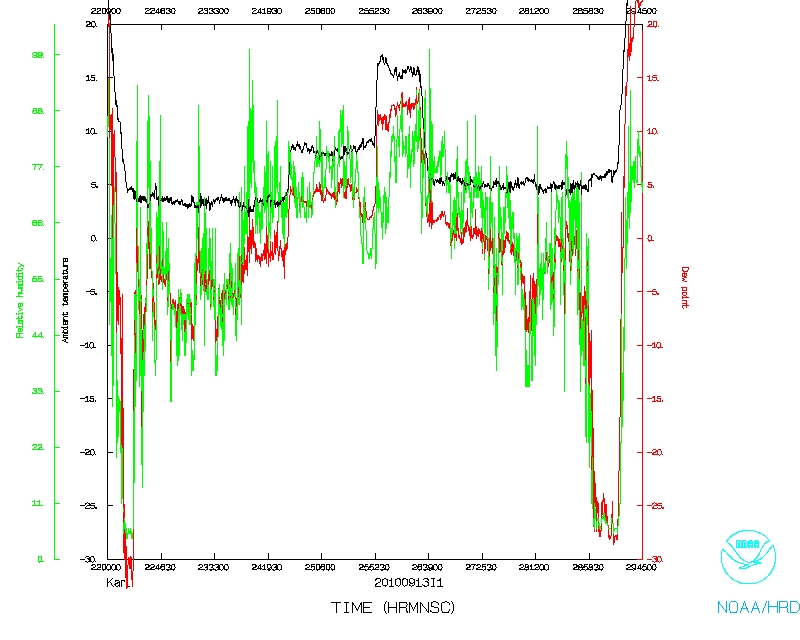 Temperature and Moisture |
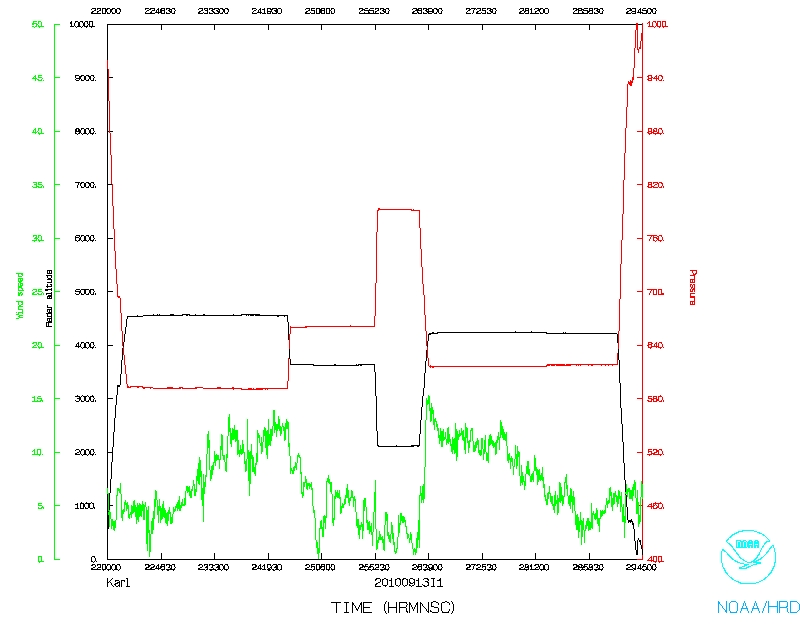 Wind and Atlitude |